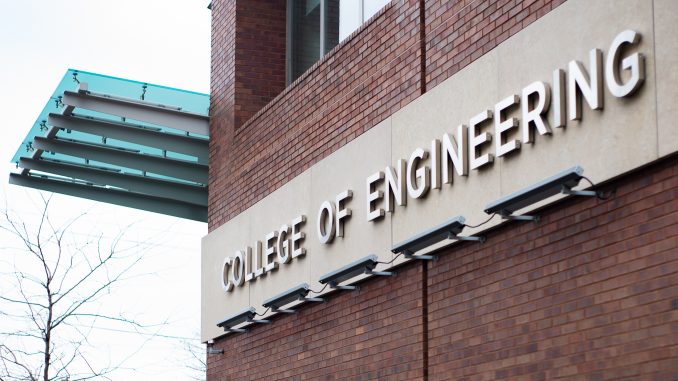
When Jelani Hasan and Ayanna Woodlin were in high school, they participated in STEM-related programming run by Temple’s Center for Inclusive Competitiveness.
“It got me a deeper interest in computer science and software development and programming, and it helped me figure out what I wanted to do when I got to college,” Woodlin said.
Now, Hasan and Woodlin are taking up the roles of their former mentors as undergraduate volunteers for CIC. Based in the College of Engineering, CIC provides resources to Philadelphia grade school students to explore STEM careers.
The programs are a part of a three-year initiative announced in early 2018, partially funded by a $200,000 grant from the Pennsylvania Educational Improvement Tax Credit program, The Temple News reported.
Hasan was inspired to pursue an engineering degree at Temple after he participated in his high school program. Shortly after his admission, Hasan was offered a position as an ambassador for the program.
“A lot of times, inner-city youth they don’t have a lot of opportunities,” Hasan said. “To be able to give kids the same experience that I had when I was in the program was interesting to me because I was interested to try and inspire the next generation.”
The CIC gives the students academic competitions, project-based learning and year-round programming such as summer camps. They’ve recently focused on teaching kids about sustainable engineering and programming, said Victoria Carberry, CIC’s STEM program manager.
“Right now one of our biggest initiatives is the aquaponics,” Carberry said. “We’re always trying to develop projects to students that are relevant, and the students of the upcoming generation have to come up with solutions to some of the upcoming impacts of climate change to Philadelphia.”
According to Hasan, the aquaponics systems built by students are symbiotic systems that can be used to simultaneously house aquatic creatures and grow produce. They’re comprised of ten-gallon fish tanks equipped with a hydroponic system that processes the natural excretions of the fish and turns them into plant fertilizer through nitrifying bacteria, he said.
Plants in a garden attached to the tank then absorb the excess nitrates from the water through their roots that otherwise would’ve been toxic to the fish, Hasan added.
“It’s ideal for both fish and plants to keep this symbiotic system going, so it’s been a great teaching tool from building it, to putting sensors on, to learning about fish and plant life cycles, to nitrogen cycles to larger concepts like sustainability,” Carberry said.
Volunteers like Hasan and Woodlin teach the kids how to assemble the tanks, the scientific concepts associated with the tanks, as well as how to program the tank’s sensors to measure water quality.
“We help the kids code Arduino systems that can help measure the tanks’ pH and temperature,” Hasan said. “We’re going to the schools and giving them an overview of how to build their own systems for their schools as well as the socio-economic applications.”
Aquaponics systems can be used as a source of fresh produce for urban areas classified as food deserts, Hasan said.
Food deserts are characterized by a lack of affordable produce and a heavy reliance on fast food joints and corner stores in an urban neighborhood.
“What aquaponics does is it allows people to grow the same things and produce and stuff at home rather than having to go outside their own neighborhood to get these things,” Hasan said. “We give them the opportunity to bring these things to their own community and live a healthier lifestyle.”
The program allows the volunteers to experience teaching scientific concepts and working hands-on with students in Philadelphia, Carberry said.
“My favorite part is to really give kids who are minorities and don’t really have options or ways to figure out what they want to do in STEM or don’t really know what STEM is or if they wanted to decide if they were interested in STEM or if it’s not for them,” Woodlin said.



Be the first to comment